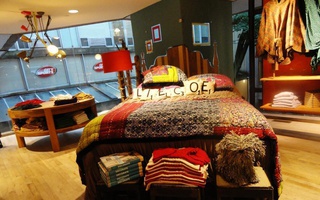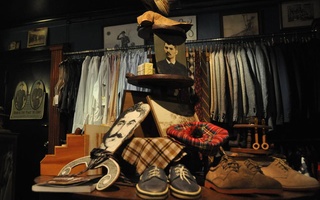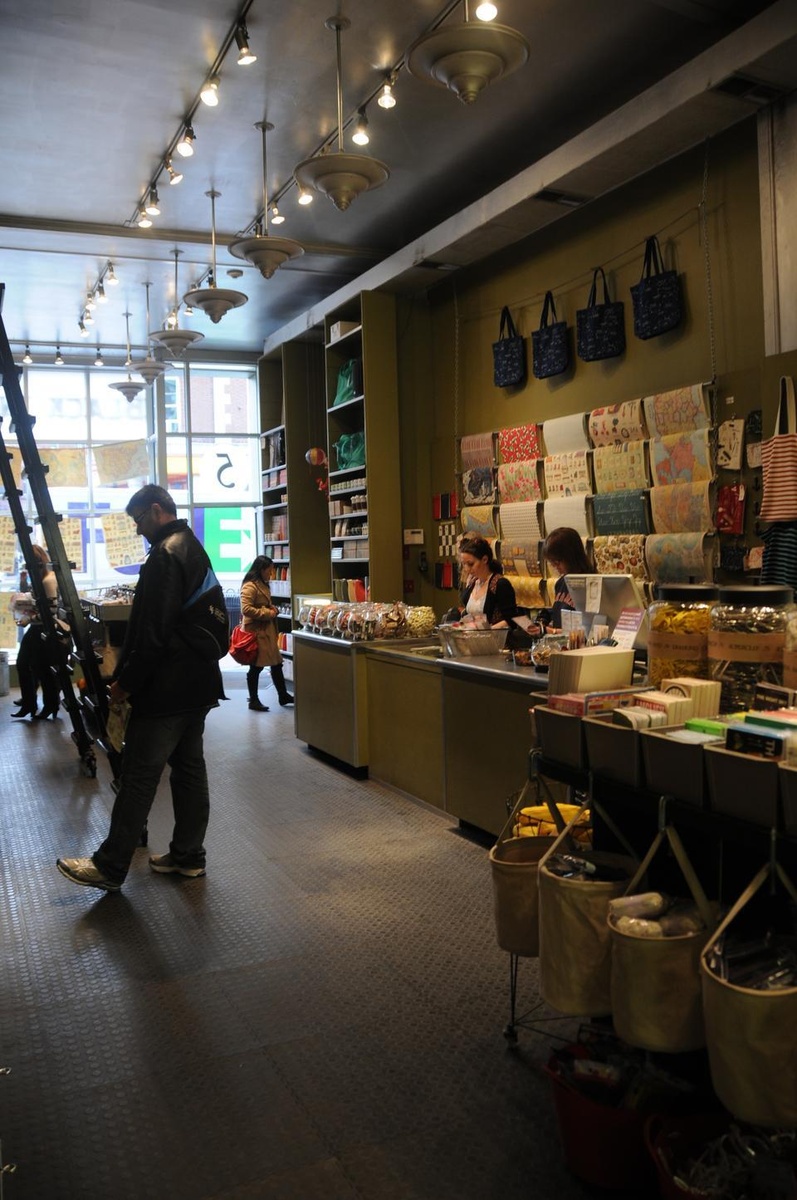Harvard Square’s Black Ink is a store that can turn 20 feet into half an hour. What looks like a wall of shelves can turn into an afternoon of shopping, since it takes an unexpectedly long time to explore this compact space. Stepping in feels less like entering a store than a modern-day cabinet of curiosities. Glass bowls brim with tops, elastics, and oversized paper clips. Cubic shelves vault 11 feet to the ceiling and are replete with colorful tea sets, posters, and matchbook gardens.
It’s not just the quirky and beautiful products that attract people, but the store’s design. The towering shelves order the chaos and feel limitless. It’s an experience more akin to entering a museum than shopping, and Black Ink isn’t alone. The arrangement and design of shops throughout Cambridge and Boston often look more like products of curation than merchandising—schemes that result from personal, aesthetic choices from the owners that often happen to appeal to a variety of buying customers.
But can the practice of curating, an art in its own right, be applied to pushing product? Even though it serves a definite commercial end, the idea of “curating” a store may not necessarily be dismissed as just marketing, without art or design. Maybe it’s a form of art that brings beauty into the everyday.
CREATURE COMFORTS
As snow accumulates rapidly and melts on my glasses, I finally spot Bobby from Boston, a vintage menswear store. Tucked away among several galleries and cafes, it rests on the gentrified edge of the South End. I quickly turn up a narrow cobblestone alley and duck into the shop for refuge from the snow.
The store is warm and inviting, like an old library. Dark, weathered wood lines the store, and hanging, glowing orbs shed a soft, incandescent light. Owner Bobby Garnett has just gone out for a cigarette, but I don’t mind. As a keen thrift-shopper, I look through the dark, clean shelves of pants, jackets, and boots. The experience is worlds away from thrifting. It’s sometimes difficult to believe that the apparel is used.
Bobby from Boston was founded in 1992, but Bobby’s been in the business for more than 40 years. His first shop opened in ’71—a leather shop, totally different from the one I’m sitting in now. “The other shops I had were more of an Art Deco, chrome and glass feel.” Sounds keen.
But the decor of Bobby from Boston is a long way from Art Deco. “We try to have the feeling of [a store of the era]… anywhere between the 1800s to the 1930s,” he says. He was first inspired by a vintage store in Philadelphia—a small place called “Rosebud.” It was the first vintage store’s interior that he really liked.
Read more in Arts
Music "In Time of War"Recommended Articles
-
Tall, Skim, Decaf... Fiction?If you’ve ever been on an endless hunt for, say, a classic Elizabeth Bowen novel that hasn’t seen shelves since
-
Loeb Fellow Urges Activism in DesignThere is a growing movement in architecture toward social activism, according to design activist and current Loeb Fellow Bryan Bell.
-
TED Curator Speaks at GSD Class DaySpeaking in front of a packed audience in Piper Auditorium at the Harvard Graduate School of Design’s Class Day, Technology Entertainment and Design (TED) Curator Chris Anderson encouraged the graduating class to pursue knowledge and to never stop learning.
-
 Free People Company Spreads Bohemian Vibe
Free People Company Spreads Bohemian Vibe -
 Oona's Experienced Clothing To Launch Online Store
Oona's Experienced Clothing To Launch Online Store -
Student Art Competition Launched for Radcliffe Yard GardenThe Radcliffe Institute for Advanced Study has launched an annual University-wide art competition allowing students to solicit proposals and designs for an installation to be displayed in the garden bordering Brattle Street in the Radcliffe Yard.














